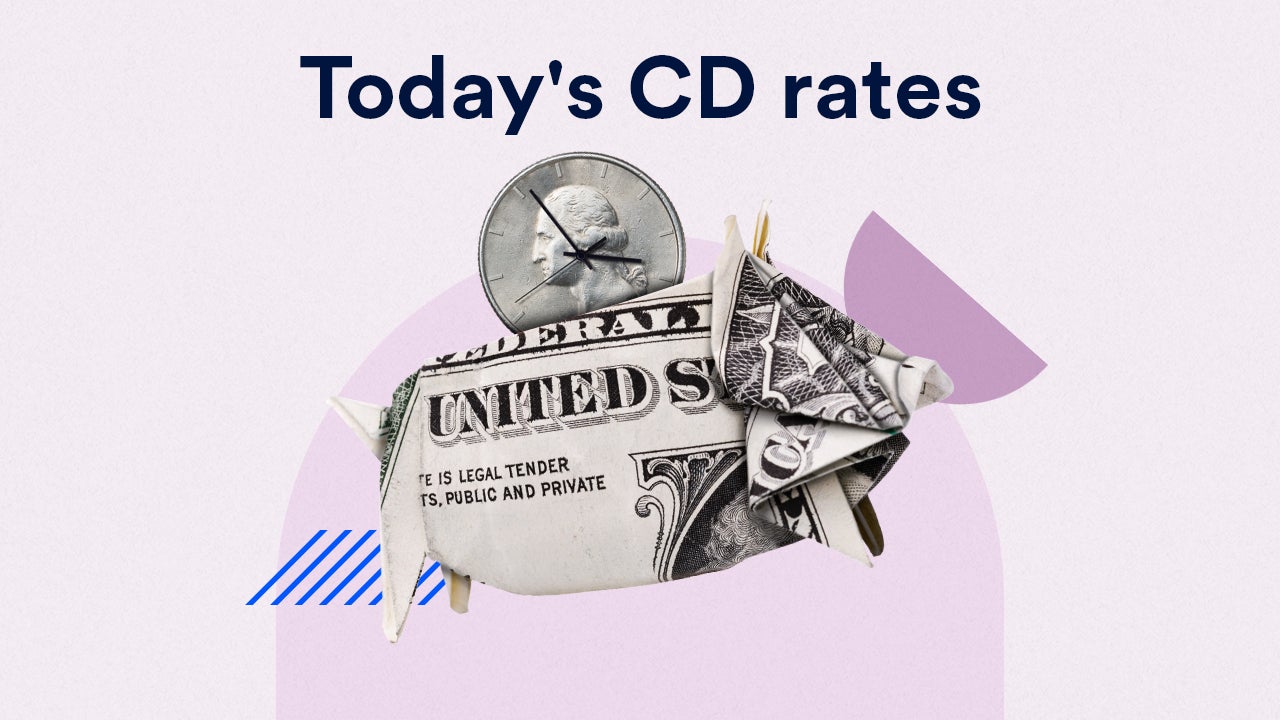Top CD rates today: July 8, 2024 | Leaders offering over 5% APY

The Bankrate promise
At Bankrate we strive to help you make smarter financial decisions. While we adhere to strict , this post may contain references to products from our partners. Here's an explanation for .
Key takeaways
- Today's leading CD rate across terms is 5.35% APY, offered on a 6-month CD.
- You'll find APYs of 5% or higher on many CD terms.
- The best rates on most terms are more than triple the national average yields, so it pays to shop around.
A certificate of deposit (CD) can be a useful tool for meeting your savings goals. Whether you’re saving to buy a house, a new car or your dream vacation, a CD allows you to calculate up front exactly how much interest you’ll have earned when the term is up. This is possible due to a CD’s fixed annual percentage yield (APY).
The winds of change are starting to pick up across the CD rate landscape. Savers should take advantage of high rates before significant rate dips take place. Among the banks we monitor, CIBC Bank was the long-time leader, with a previous rate of 5.36 percent APY for its one-year CD. However, the rate dropped to 5.09 percent APY and then rose to 5.21 percent APY in a matter of days. Uncertainty surrounding Federal Reserve rate cuts is a likely reason for the fluctuation, as banks prepare for a dip in rates.
Today, the leading APY across CD terms on our list of banks is 5.35 percent, which is available on a 6-month CD from Bask Bank, requiring a $1,000 minimum deposit. Many shorter terms are earning higher yields than longer ones in the current rate environment.
Bankrate’s table below shows the highest yields offered on widely available CDs, by term. It also lists national average CD rates and how much you’d earn for each term with a $5,000 investment.
Today's best CD rates by term
| CD term | Institution offering top APY | Highest APY | National average APY | Estimated earnings on $5,000 with top APY |
|---|---|---|---|---|
| 3-month | America First Credit Union | 5.25% | 1.23% | $64 |
| 6-month | Bask Bank | 5.35% | 1.73% | $132 |
| 9-month | Forbright Bank | 5.30% | N/A | $197 |
| 1-year | Bask Bank | 5.30% | 1.79% | $265 |
| 18-month | Bask Bank | 5.00% | 1.89% | $380 |
| 2-year | First Internet Bank of Indiana | 4.76% | 1.52% | $487 |
| 3-year | First Internet Bank of Indiana | 4.61% | 1.41% | $724 |
| 4-year | First Internet Bank of Indiana | 4.45% | 1.47% | $951 |
| 5-year | First Internet Bank of Indiana | 4.50% | 1.41% | $1,231 |
Note: Annual percentage yields (APYs) shown are as of July 8, 2024. APYs for some products may vary by region.
N/A: Not available; Bankrate doesn’t track national averages for the 9-month CD term due to limited available data. Estimated earnings are based on the highest APYs and assume interest is compounded annually.
When a CD isn’t the best choice
A CD locks in your money for the entire length of the term, and you’ll likely be charged an early withdrawal penalty if you take out the funds sooner. As such, a CD shouldn’t be used for money that you may need in the meantime for living expenses or emergencies. A liquid savings account is a better place for funds that could be withdrawn to cover unplanned expenses such as a car repair or a medical bill.
What the current rate environment means for CDs
In 2022 and 2023, the Federal Reserve raised its benchmark interest rate a total of 11 times, bringing its current target range to a 23-year high of 5.25-5.50 percent. However, the Fed has left rates unchanged for seven straight meetings, due to inflation not slowing as quickly as it has in the past.
Yields on competitive savings accounts and CDs tend to move in lockstep with the Fed’s interest rate moves. As such, many banks increase their yields when the Fed raises rates, and they lower yields when the federal funds rate drops. While the Fed has held rates steady since July 2023, top CD APYs ended up peaking in late 2023 and have since been decreasing gradually.
Is it still a good time to open a CD?
“Even though CD yields have pulled back a bit, you’re still able to lock in yields that are well in excess of inflation and do so for multiple years,” says Greg McBride, CFA, Bankrate’s chief financial analyst. “The declines will likely accelerate as we get closer to the Fed beginning to cut interest rates, so there is no sense in waiting.”
CD FAQs
Research methodology
Bankrate calculates and reports the national average APYs for various CD terms. Factored into national average rates are the competitive APYs commonly offered by online banks, along with the very low rates often found at large brick-and-mortar banks.
In June 2023, Bankrate updated its methodology that determines the national average CD rates. For the process, more than 500 banks and credit unions are now surveyed each week to generate the national averages. Among these institutions are those that are broadly available and offer high yields, as well as some of the nation’s largest banks.